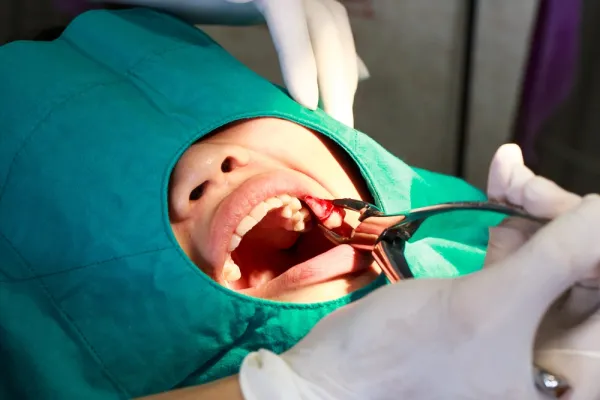Perfect Your Dentoalveolar Excision Coding With These 3 Useful Tips

Hint: Don’t leave $240 on the table by failure to identify right type of repair.
When your oral surgeon performs an excision associated with the dentoalveolar structures, you will first need to understand whether your clinician performed an excision to modify the tuberosities or to remove a lesion or a tumor. Further, you will also need to focus on the type of repair your clinician performed after the procedure as your code selection will rely on this information.
Use these three tips to help overcome your coding hurdles and get the deserved reimbursement each time you encounter a scenario to report an excision associated with the dentoalveolar structures.
1. Choose From Five Excision Codes Based on Repair Type
When your surgeon performs an excision associated with dentoalveolar structures, you have five codes to report from based on the type of lesion and type of repair performed after the excision procedure. The five CPT® codes that you should look through when your surgeon performs an excision associated with dentoalveolar structures include:
You will have to choose 41822 or 41823 when your surgeon performs an excision procedure on the tuberosities. Your surgeon will opt for this procedure when he plans to modify the tuberosities, for instance, to receive a denture. “But, remember, a diagnosis relating to dentures or dental prosthetics is not a covered service,” says Barry Shipman, DMD, clinical professor, University of Florida School of Dentistry, Hialeah Dental Center. “Do not tag the treatment codes with diagnosis codes relating to dental care of the teeth and gums.” Depending on whether he performs a soft tissue or a hard tissue excision, you will need to choose between 41822 and 41823, respectively.
For an excision of a lesion or a tumor, you have three codes to choose from depending on the type of repair your surgeon performs after the procedure. When your clinician does not perform any repair following the removal of the lesion or tumor, you will have to choose 41825. “A cancer diagnosis will indicate why the surgery was done,” Shipman adds. When your clinician places simple sutures at the end of the procedure to close the surgical site, you will need to report 41826. If your clinician performs a layered closure of the surgical site after the excision, you will need to choose 41827. You should also think of 41827 if your clinician has placed any grafts for the closure of the surgical site.
Reminder: You should use one of these three codes only if your clinician performed an excision of the lesion or tumor. On the other hand, if your clinician performed a destruction of the lesion by the use of lasers, cryotherapy or cauterization, you will have to choose a different CPT® code. In such an instance, you will have to choose to report 41850 (Destruction of lesion [except excision], dentoalveolar structures) for the procedure your surgeon performed.
Reimbursement: Look thoroughly through patient documentation to check the type of repair that your surgeon opted for after the excision. The 2016 relative value units (RVUs) for 41825 are 6.19 RVUs, while 41826 and 41827 carry 9.24 RVUs and 12.91 RVUs respectively. This translates to a Medicare reimbursement of $221.63 for 41825 while 41826 and 41827 pay out $330.83 and $462.23 respectively. As the differences in payments between the three codes is quite significant, you might risk losing quite a bit of money if you fail to identify the apt code to report based on the type of repair your surgeon performed after the procedure.
2. Check For Bundling When Reporting Two Excision Codes Together
You might face up instances where your surgeon might attempt to remove two different lesions of the dentoalveolar structures for the same patient on the same calendar date of service. In such an instance, you will need to check Correct Coding Initiative (CCI) edits to see if the two codes you are reporting are bundled and if so, whether or not a modifier can be used to overcome the edits.
If you are reporting the same code for the removal of the two lesions, you will have to append modifier 59 (Distinct procedural service) to the second unit of the code to let the payer know that your clinician performed the procedure on two different lesions with the same type of repair. So, for instance, if your clinician performed the excision procedures on the two lesions and did not perform any repair of the surgical site, you will have to report 41825 for the first excision and report 41825-59 for the second excision. You should include appropriate documentation to let the payer know that your clinician performed surgical removal of two lesions.
On the other hand, if your clinician performs excision of two dentoalveolar lesions but performs different types of repair after the procedure, you will be reporting two different codes for the procedure. If you look through CCI edits, you will see that 41825 is bundled into 41826 and 41827 while 41826 is bundled into 41827. However, all these edits carry the modifier indicator ‘1,’ which means that you can override the edit by appending a suitable modifier. You will have to append the modifier 59 to the lesser valued procedural code. For instance, if you are reporting 41826 and 41827, you will have to append the modifier to 41826 to overcome the edit and allow reimbursement for both the codes.
3. Look For Opportunities to Report a Separate E/M Code
Like with most procedural codes, any preoperative evaluation and postoperative management of the patient should not be reported separately with an E/M code. These evaluations and management of the patient, both preoperative and postoperative, are included in the work described by the excision code that you will report for the procedure and should not be reported separately.
However, if your clinician performs a separate and distinct E/M service that is not related directly to the excision procedure that your clinician performed, you can report an additional appropriate E/M service code. However, you will need to observe that E/M codes are bundled into the procedural code with the modifier indicator ‘1.’ So, you will have to append the modifier 25 (Significant, separately identifiable evaluation and management service by the same physician or other qualified health care professional on the same day of the procedure or other service) to allow reporting of the E/M code with the excision code.
So, if there is a scenario like the patient is suffering from hypertension or diabetes and your clinician performs additional investigation about the condition. Your clinician will want to know if there are going to be any adverse effects from the systemic condition you can consider reporting an E/M code for the additional investigation your clinician performed.
Global days: While 41825 and 41826 carry a 10-day global period, 41827 carries a 90-day global period. So, any post-operative follow up that your clinician performs in this period will get included within the payment allocated for the particular CPT® code and cannot be claimed for separately with any other CPT® code or an E/M code.




